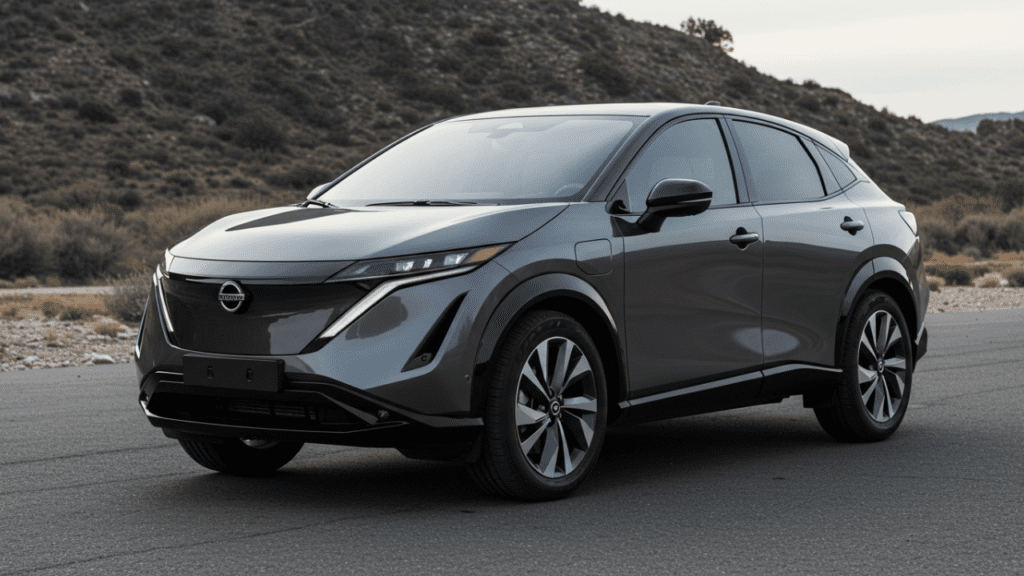Electric vehicles (EVs) have fundamentally changed in recent years. Battery technology advancements guarantee even lower-priced options, expanding their adoption. As the world shifts towards eco-friendliness and lowering carbon footprints, the demand for electric vehicles is only going to increase, especially as we head into 2025.
Electric vehicles, especially hybrids, have been expensive for a long period of time, which has remained one of the most significant obstacles for people trying to adopt electric cars. Starting in 2025, however, a new wave of affordable electric cars are coming to market, making it much more convenient for consumers to adopt going electric without spending a fortune.
This article provides a sneak peek of the most affordable electric cars available in 2025, explains their appealing aspects for budget-conscious shoppers, and shares recommendations on optimizing the electric vehicle purchase.
Why You Should Consider an Electric Car in 2025
Saving Money in the Long Run
Electronics cars could help you save more money in the future. Their initial purchase price may be heftier than traditional vehicles, but the price you incur on fueling and repairs will be much lesser with EVs as compared to gas cars. EV charging is significantly inexpensive, especially with the subsidized electricity rates. Electric vehicles often come with fewer moving parts which translates to repairs and maintenance cost.
Environmentally Friendly
Electric vehicles do not burn any fuel which makes them greener. They are not responsible for tailpipe emissions which is one of the major contributors to pollution and harmful green house gases. Using an EV, you are actively engaging in keeping the environment pollution free.
Government Incentives
Many governments are now supporting the adoption of EVs. These incentives can be through federal tax reliefs, state compensations, and other local benefits such as unrestricted access to carpool lanes and free parking. All these have made the transition to electric cars cheaper.
Technological Advancements
The past few years have seen remarkable improvement in the technology related to electric vehicles. The charge retention of the batteries is improving, and so is the time taken to fully charge the vehicle. Looking forward to 2025, it is possible to expect even better performance, longer ranges, and advanced options in low-cost electric vehicles.
What Makes an Electric Car “Affordable”?
Initial Cost vs. Total Cost of Ownership
When it comes to buying an inexpensive EV, it is important to consider factors like the total cost of ownership. Many affordable EVs come at a lower price compared to their more expensive counterparts, however, the cost of ownership still plays an important role. The cost of ownership includes the following factors:
- Charging Costs: This is a key factor to consider. Charging at home is significantly cheaper compared to filling up a gas tank.
- Maintenance: EVs tend to have fewer moving parts and thus, experience less wear and tear, which results in lower maintenance.
- Insurance: Some insurance companies offer lower premiums for affordable EVs in comparison to traditional vehicles.
Key Factors That Affect EV Prices
The following aspects tend to impact the price of an electric vehicle:
- Battery Range: The price of affordable EVs increases because batteries with longer ranges typically have higher price tags, however, many offer decent ranges of 200-300 miles on a single charge.
- Charging Speed: Considered to be an expense, faster charging speeds also mean greater convenience to the user.
- Size and Features: Smaller vehicles with limited features like self driving tend to also be more affordable but larger models are on the expensive side.
- Brand and Model Reputation: Lesser-known brands tend to charge less due to limited public exposure while well-established brands often market items at a higher cost owing to brand value.
Top Affordable Electric Cars Coming in 2025
A wide selection of inexpensive electric cars will be available in 2025 for consumers. We divide the best contestants predicted to enter the market into the following categories.
Tesla Model 2 (Expected Price: $25,000 – $30,000)
Overview
The Tesla Model 2 comes with no surprise as the Model 2 is among the expected electric vehicles set to be launched in 2025. Known for innovation and technology, Tesla Inc is likely to produce a comprehensive compact EV model at a relatively low price.
Key Features
Range: 250-300 miles estimated on a full charge.
Performance: Fun driving experience expected due to Tesla’s signature acceleration and handling.
Technology: Expect Tesla’s autopilot, infotainment features, and over the air updates and other high tech functionalities.
Pricing: Expected to start at the lowest price of $25,000 making it one of Tesla’s most affordable EVs.
Why It’s a Top Pick
Reasoning It’s A Top Pick The sheer brand value of Tesla when combined with other determining factors such as performance, range and technology given on the vehicle, makes it an incredible option for highly prospective EV buyers.
Chevrolet Bolt EV 2025 (Expected Price: $28,000 – $33,000)
Overview
The Chevrolet Bolt has been doing well in the EV market, and the 2025 model will only enhance the current version. The Bolt comes as a compact hatchback which provides convenience at an affordable price.
Key Features
Range: Approx. 270 miles per charge.
Performance: Bolt’s acceleration and driveability makes it a perfect city car.
Charging: Fast charging provides 100 miles of range within 30 minutes.
Interior: Larger than average for a compact vehicle, the interior is modern with comfy upholstery.
Why It’s a Top Pick
Chevrolet makes an affordable, yet reliable product that stands out from the rest, and so does the Bolt EV. It has impressive range and performance which continues Chevrolet’s stance on value-for-money EVs both in 2025 and in the future.
Nissan Ariya (Expected Price: $30,000 – $35,000)
Overview
The Ariya is Nissan’s effort to combine sleek aesthetic with a budget. This electric crossover is set to appeal to those seeking more room than traditional crossovers offer.
Key Features
Range: Up to 300 miles on a full charge. Natural Fuel also enables towing trailers, vital for long trips.
Performance: Comfortable steering with options for all wheel drive backup, suiting different roads driving conditions.
Technology: Enhanced safety with integration to a big screen, multi-functional touchscreen and driver assistance technologies.
Interior: Spacious, sleek, and beautifully crafted high quality materials.
Why It’s a Top Pick
If you are a Nissan fan, then the Nissan Ariya expands the lineup of electric alternatives. It’s also the best pick for budget shoppers due to its price and range. The design and performance certainly don’t hurt either.
Ford Mustang Mach-E (Expected Price: $35,000 – $40,000)
Overview
From the Ford stable comes the 2025 electric SUVs- do-it-all winner which is The Ford Mustang Mach-E. It revitalizes the essence of Fords muscle cars with electric thrills, marking an era of truly exciting SUVs.
Key Features
Range: Depending on the model, a range of 250-300 miles.
Performance: Blazing fast acceleration for the sporty trims.
Technology: Ford’s SYNC 4A offers intuitive touch and voice control.
Interior: Elegant, well laid-out, with generous hauling capacity.
Why It’s a Top Pick
Designed for drivers wanting spacious altitude soaked behind the wheel and higher sightlines with a performance sports sedan feel, the Ford Mustang Mach-E delivers on all counts. The price adds to its appeal for most buyers.
Hyundai Kona Electric (Expected Price: $32,000 – $37,000)
Overview
The Hyundai Kona Electric is compact SUV which is practically beneficial. The Kona offers affordable pricing and impressive solid range for its price which makes it favorable for 2025.
Key Features
-
Range: Around 250 miles on a full charge.
-
Performance: Smooth, responsive, and easy to drive.
-
Charging: Charge up to 80% in fast 54 minutes.
-
Interior: Spacey for passengers and cargo, modern and decently comfortable.
Why It’s a Top Pick
Balanced practicality with affordability and ample range, Kona seeks EV enthusiasts looking to save septics ideally providing lower costs for families and higher value for individuals.
How to Choose the Best Affordable Electric Car for You
Step 1: Determine Your Budget
To begin, outline the purchasing budget of a particular electric vehicle (EV) model. Make sure to include government subsidizations as they can aid in reducing the total cost. Remember to factor in the long-term savings on maintenance and fuel when calculating your budget.
Step 2: Identify Your Primary Needs
Determine the purpose of acquiring an electric car. Will you require a long-range EV for long-distance travel? Alternatively, does a compact vehicle that has a shorter range appeal more for city driving? Will you require additional space for cargo and passengers?
Step 3: Compare Available Models
After establishing the budget and primary needs, examine multiple marked models regarding range, features, and performance. Consult other buyer reviews as well as expert opinions to have a holistic outlook.
You can also read Fastest-charging EVs (under 15 minutes in 2025)
Maximizing Your Savings When Buying an Affordable EV
Government Incentives and Rebates
Federal Tax Credit: Provided depending on the make and model of the automobile, allowances of up to $7,500 can be received.
State Incentives: Government rebates along with tax credits are provided by numerous states during the purchase of EVs. Make sure to consult with local authorities.
Leasing vs. Buying
Driving an electric vehicle accounts as a significant financial investment which translates into monthly fees. Hence, leasing an EV will allow you to have lower monthly payments, but the car does not belong to you in the end. On the other hand, purchasing the vehicle outright gives you full ownership as well as freedom from the limitations which come from leasing the vehicle such as mileage restrictions.
Tips for Lowering Charging Costs
Setting up a home charging station will save you on charging expenses in public with regard to your EV.
If your utility provides discounts, make sure to take advantage of the electricity during off-peak hours.
Charging Infrastructure in 2025
Where to Charge Your Electric Car
Home Charging: For most people, the most comfortable and economical choice is installing a Level 2 charger at home.
Public Charging: There is an increasing availability of charging stations and fast charging stations across the urban areas and along highways.
Workplace Charging: Some companies provide free logo or subsidized charging, so confirm if this applies to you.
How Charging Will Improve by 2025
There will also be the construction of numerous fast charging stations across the Us, greatly reducing the amount of time it takes for you to charge your EV.
With the advancement of technology, it is expected that by 2025 the concept of wireless charging will turn into reality, making EV charging much more convenient than before.
My Opinion| Is an Affordable Electric Car Right for You in 2025?
Heading into 2025, the electric vehicle industry seems to be opening up to the masses. Cost effective electric vehicles now provide good value for money with long distances, fast charging, and new technology. If you are thinking about switching to electric, this is a good time to buy a budget EV that meets your requirements and is easy on your wallet.
Because of government subsidies, not to mention the reduced spending on gasoline and vehicle maintenance, an affordable electric car is a purchase that has future benefits. So, consider all offers available to you, and don’t hesitate to switch into electric driving.

















Leave a Reply